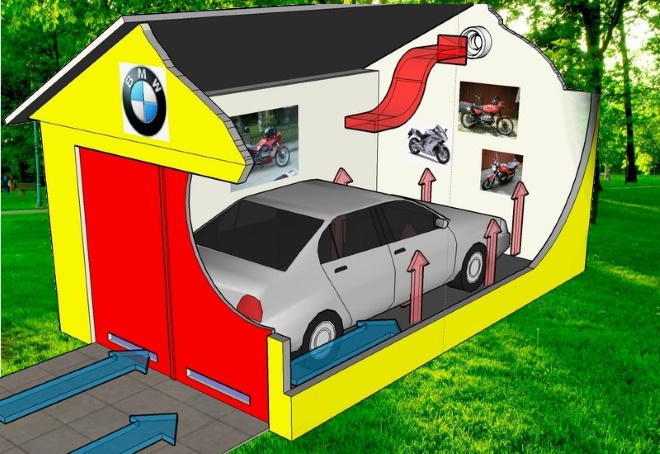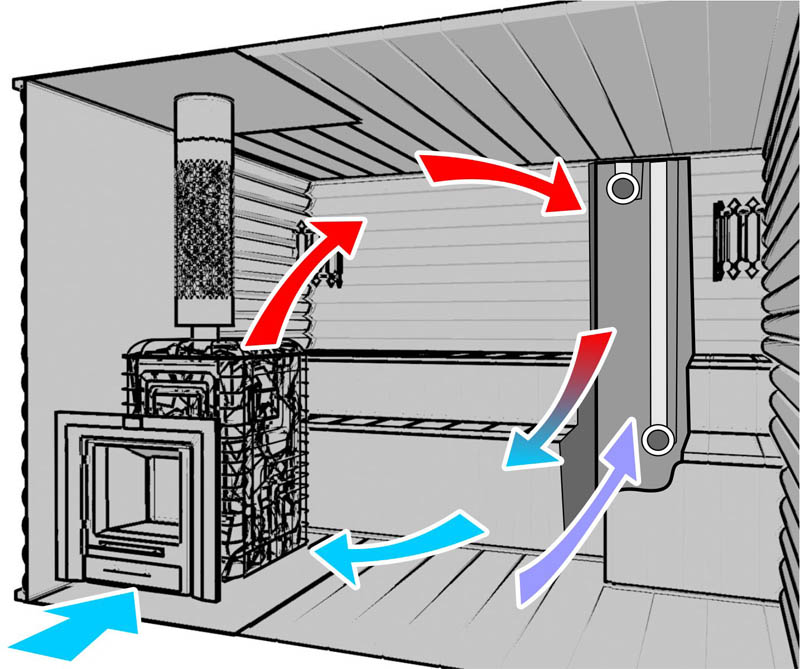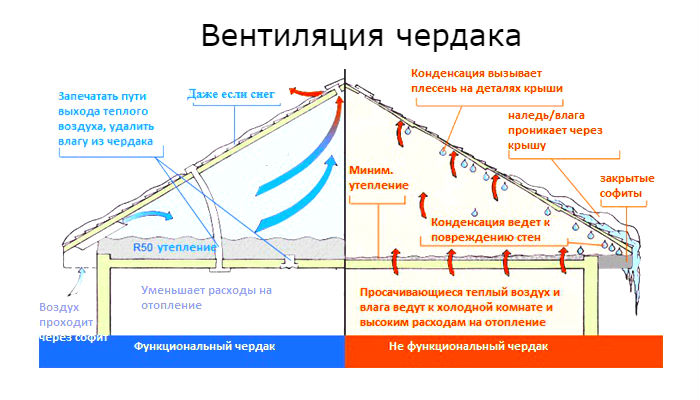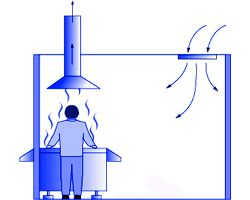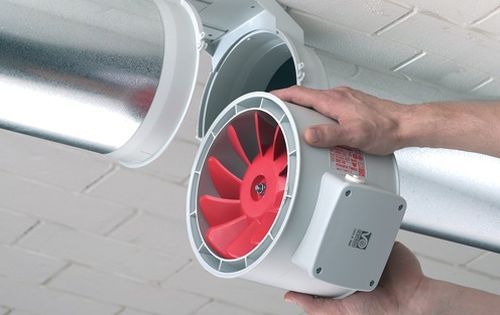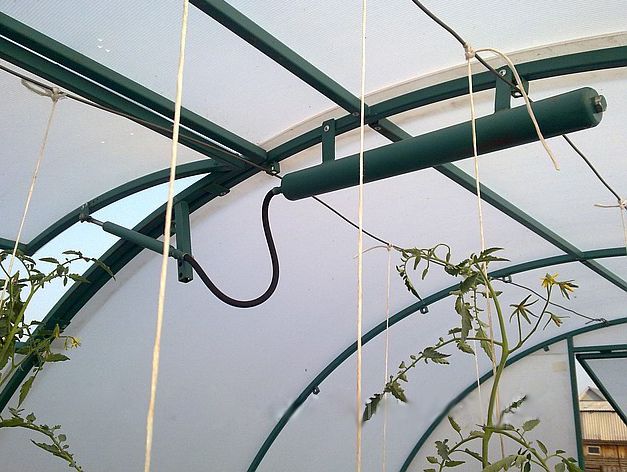All woodworking enterprises have one common problem - the formation of shavings, dust and sawdust, which not only pollute the air in the workshops, but, when piled up, can cause a fire. Therefore, the safety regulations for such enterprises provide for the regular cleaning of workshops and workplaces from technological wood waste.
The removal of wood is carried out using aspiration systems, which are installations that suck up wood dust and sawdust and move them into special bins. As a rule, such bunkers are located outside the workshop, in places that allow convenient unloading and removal of accumulated sawdust.
Classification of aspiration systems
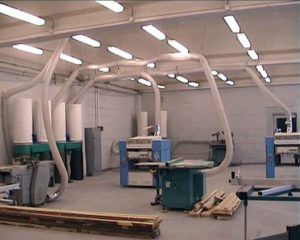
All aspiration systems used in enterprises that are specified for wood processing are classified according to the following criteria:
- way of air circulation;
- type of hydraulic regime used in the installation;
- type of connection of the dust extraction unit with the technological equipment.
Air circulation method. Aspiration plants can be direct-flow or recirculation. The principle of operation of direct-flow systems is based on the intake of air from the premises, its purification and subsequent release into the atmosphere.
Recirculation equipment also cleans the air from pollution, but does not throw it out into the street after cleaning, but returns it back to the workshop. Such systems contribute to a significant reduction in heat losses during the cold season and a decrease in money consumption for heating.
Hydraulic mode type. On this basis, all aspiration systems are divided into two types: operating in constant mode and operating in variable mode.
The type of connection between the dust extraction unit and the equipment. Distinguish between autonomous and centralized cleaning systems. The latter are connected to several working woodworking installations, each of which, if necessary, can be turned off or on.
Stand-alone systems are connected to one or more woodworking machines that are turned on and off at the same time.
Operating principle
Aspiration systems consist of several main parts:
- Bunker.
- Cyclone.
- Industrial fan.
- Pipelines branching along the working area of the workshop.
Thanks to the ventilation system, a vacuum is created in the dust extraction plant, under the action of which dust and waste are moved from the workplace to the separator. In the separator, large particles are separated, which enter the press, are formed into briquettes and are sent to a separate warehouse. The air with residues of fine fractions and dust is filtered by several bag filters, and then the cleaned air flows are directed either outside or into the workshop. The dust that accumulates in the filters is collected in special containers or also briquetted.
Types of aspiration systems
When choosing dust collection equipment, first of all, it is necessary to take into account the following data:
- The duration of the work of the machines.
- Number and diameter of suction devices.
- Air speed in the dust collection unit.
- The number and size of chips to be removed.
- The size of the hopper in which the waste is stored.
- Availability of suction devices that can be moved around the workshop.
Waste disposal devices PUA, PUAK
With the help of the PUA and PUAK installations, dry, non-sticking shavings and dust are removed. Since these systems have a small head, they should be installed at a distance not exceeding three meters from the machine. Performance indicators of such units fluctuate within 1250-3900 m³ per hour. There are no mechanisms in these devices that regenerate the filter surfaces. PUA systems require regular removal and cleaning of the accumulated dust from the filter bag, while the frequency of such cleaning depends on the fraction of particles - the finer they are, the more often they have to be shaken out.
To work with very fine dust, PUAK units are most often used, which, instead of a filter bag, are equipped with folded filters. These devices are more efficient than PUA.
Compressed air is used to regenerate the filter elements. PUA and PUAK are used in small enterprises with variable load of machines. Depending on the model, the units can be equipped with manifolds and hoses for connecting several suction units to one machine. It is not recommended to use these settings in continuously operating enterprises.
Small-size filters (bag filters)
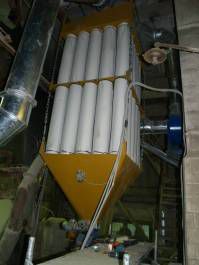
Such devices remove any dry dust that does not tend to stick together. The most common models include RFU-10, RFU-5, RFU-3.5. The standard apparatus consists of a fan enclosed in a sound-insulating casing, a silencer, a filtration section, a mechanical regeneration mechanism, a dust collection bin and a control system, which is a metal cabinet. The hopper, which collects dust, is equipped with wheels and a device that allows the hoist to grip it and overturn it. The waste suction process is carried out thanks to a ventilation system that creates a vacuum.
The productivity of small-sized hoses is 3500-10000 m³ per hour. The distance at which the devices should be installed from the machines is no more than 15 meters. It is possible to change the fan speed and, accordingly, the pressure. This aspiration is for woodworking with a tight production schedule that does not generate a lot of waste.
Filters for large systems
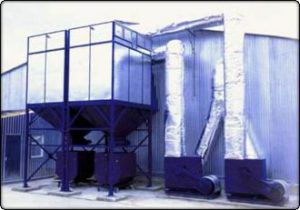
The productivity of filters used in central aspiration systems is 8000-20000 m³ per hour. Mostly these are bag filters with an internal or external design.
Such systems consist of a filter section, a fan enclosed in a noise-insulating casing, a regenerating mechanism, a waste collection bin and a cabinet with a control drive. In addition, these systems are equipped with a support frame and a pipe that connects the filter to the fan. The capacity of dust-collecting bins is from 1 to 3 m³.
The most common models of baghouse filters for large systems are SRF8 and SRF15. The sleeves in them are made of a special needle-punched material, through which the dust blown off by compressed air easily moves into the storage hopper. Central aspiration systems are especially relevant for large enterprises that generate dust with a low weight and significant volume.
Aspiration for woodworking allows not only to clean the air, the workshop area and prevent a fire, but also to use the collected sawdust for secondary production, which significantly increases the efficiency of woodworking industries.

